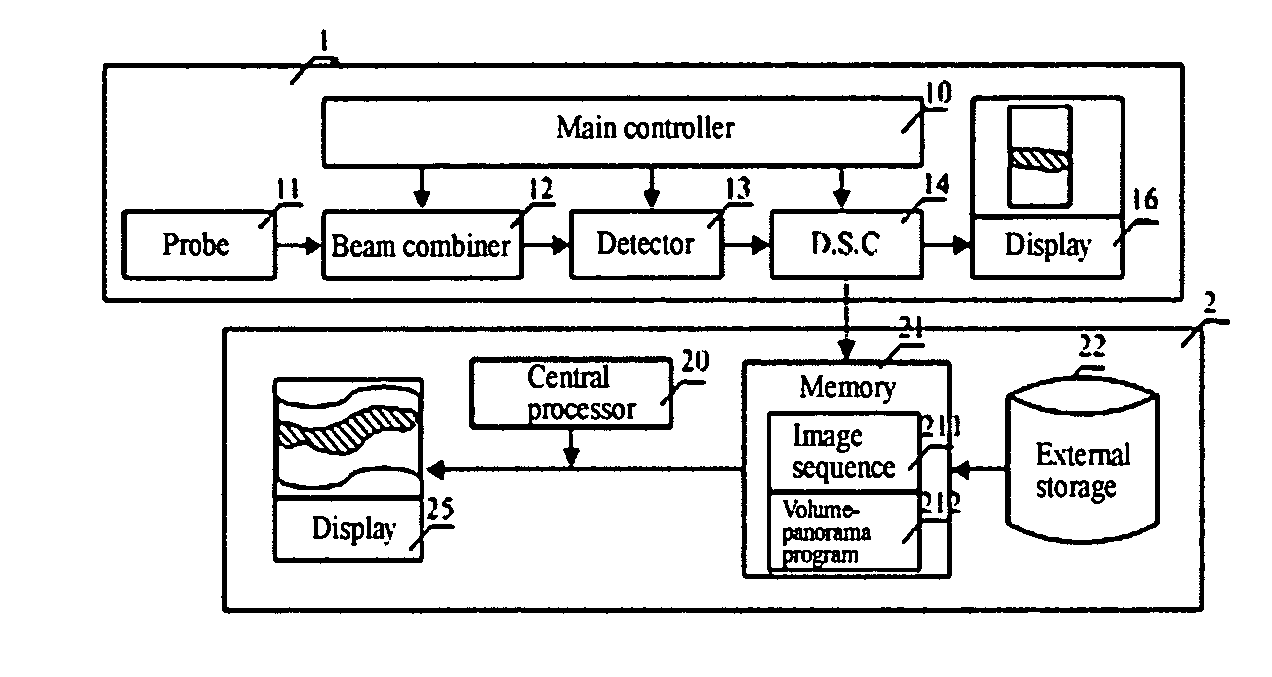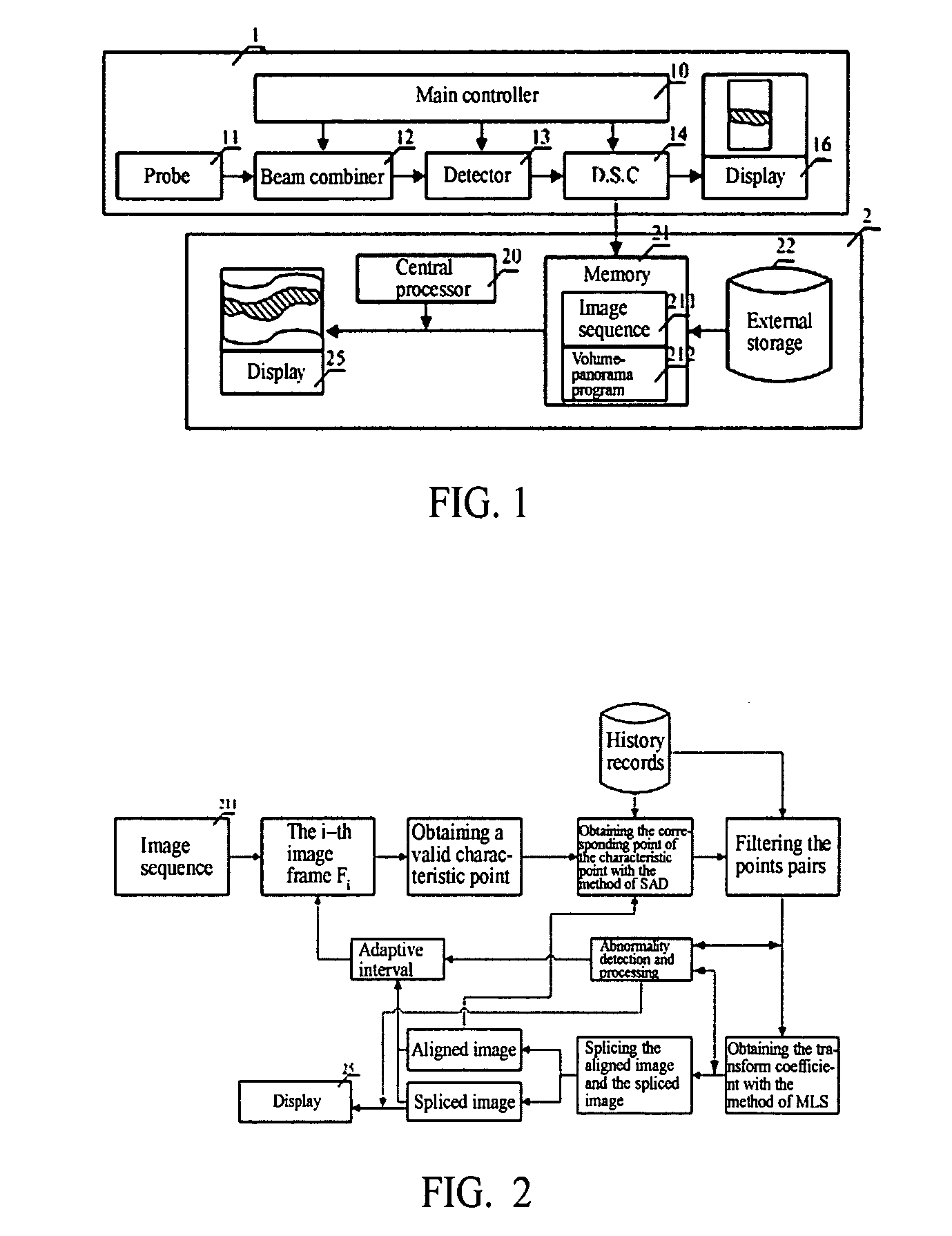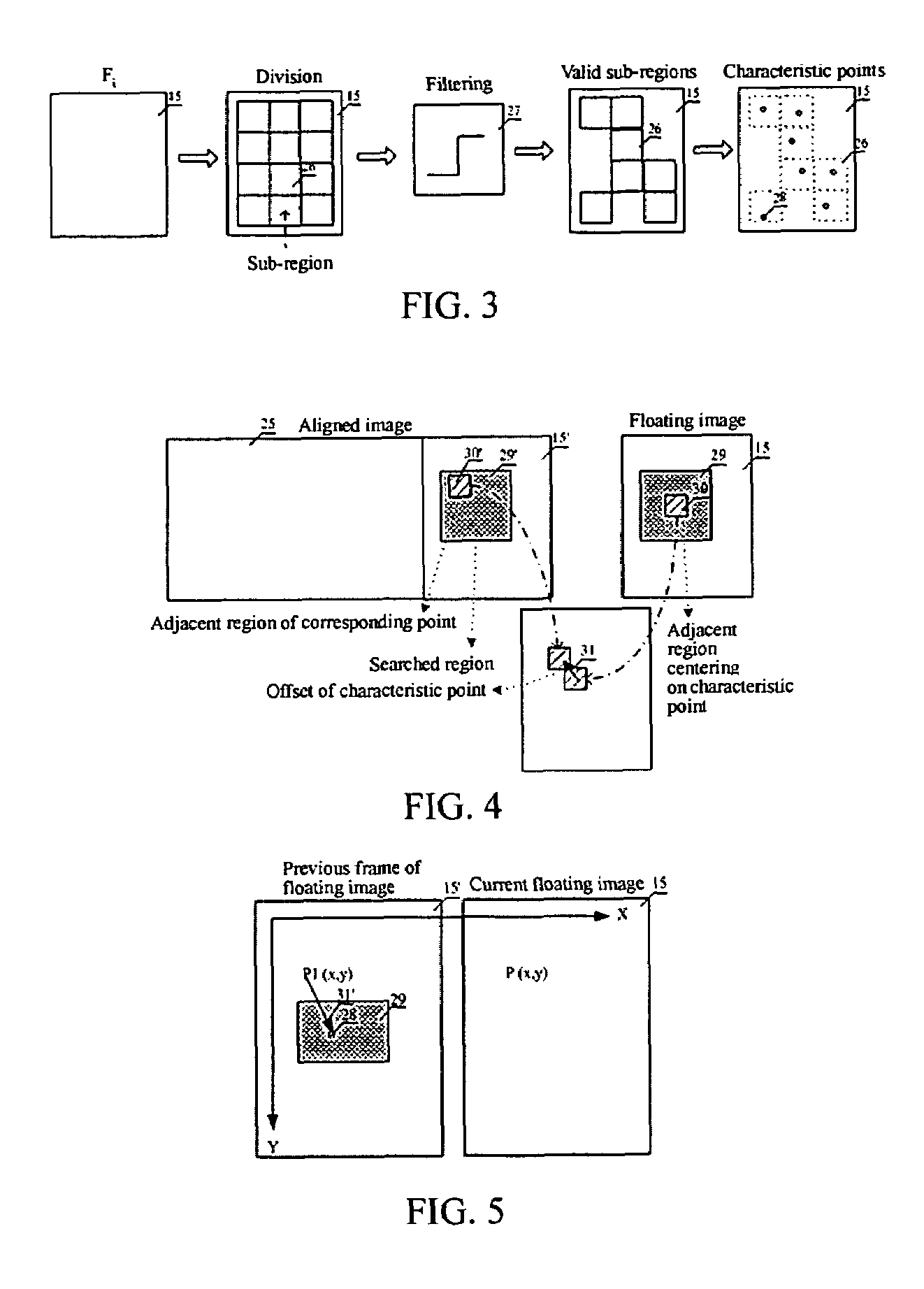Method of volume-panorama imaging processing
a volume-panorama and imaging technology, applied in the field of image data processing or generation, to achieve the effect of quickly and accurately generating
- Summary
- Abstract
- Description
- Claims
- Application Information
AI Technical Summary
Benefits of technology
Problems solved by technology
Method used
Image
Examples
first embodiment
[0071]The serial number i of the image is 1, 2, 3. . . , and Δ is an interval for picking up the image sequence. The method according to the invention comprises the steps of:
[0072]a. obtaining the image sequence, and initializing an aligned image and a spliced image as a first image frame, where i=2 and Δ=1;
[0073]b. dividing the i-th image frame Fi into a plurality of sub-regions;
[0074]c. calculating a motion vector of the i-th image frame with respect to the aligned image;
[0075]d. calculating a transform coefficient based upon a fitting of the motion vector;
[0076]e. splicing the Fi to the current spliced image based upon the transform coefficient, and configuring or splicing the aligned image with the Fi; and
[0077]f. i=i+Δ, and returning to the step of b if the i-th frame exists, otherwise outputting the current spliced image as a resultant image.
[0078]The above steps relate to two main procedures of alignment and splicing. The former is used to obtain the transform coefficient, an...
case 1
[0097] The quality of a single image frame is unreliable and no calculation is performed with the MLS. This case occurs in the double filtering during the alignment, including one filtering for selecting characteristic points and the other filtering of motion vectors. If the number of valid point pairs of the characteristic points and the corresponding points (motion vectors) is smaller than a preset number after the double filtering (possibly in that the correlation may be too poor due to a too large translation amount of the Fi relative to its previous image or any other factor), then the image frame will not be subject to the final splicing.
case 2
[0098] The offset of the transform coefficient calculated with the MLS appears abnormal (too fast or too slow). This case may be due to any problem of input data (the previous and the subsequent frames are incoherent) or due to an inaccuracy of the above interval preset through the prediction, wherein the calculated motion vector may be too large or small if the interval is too large or small.
[0099]As for any of the above cases, the image frame will not be subject to the subsequent splicing (i.e. the step of e), and a return procedure will be executed to go back to the initial state prior to the processing of the frame. Meanwhile, the interval for picking up the image sequence will be adjusted self-adaptively for executing the processing of another frame.
[0100]When there occurs the cases, including the case 1, continuously several times in which the subsequent splicing is not performed, the system can judge that the part of the image among the image sequence is undesirable in qualit...
PUM
 Login to View More
Login to View More Abstract
Description
Claims
Application Information
 Login to View More
Login to View More - R&D
- Intellectual Property
- Life Sciences
- Materials
- Tech Scout
- Unparalleled Data Quality
- Higher Quality Content
- 60% Fewer Hallucinations
Browse by: Latest US Patents, China's latest patents, Technical Efficacy Thesaurus, Application Domain, Technology Topic, Popular Technical Reports.
© 2025 PatSnap. All rights reserved.Legal|Privacy policy|Modern Slavery Act Transparency Statement|Sitemap|About US| Contact US: help@patsnap.com



